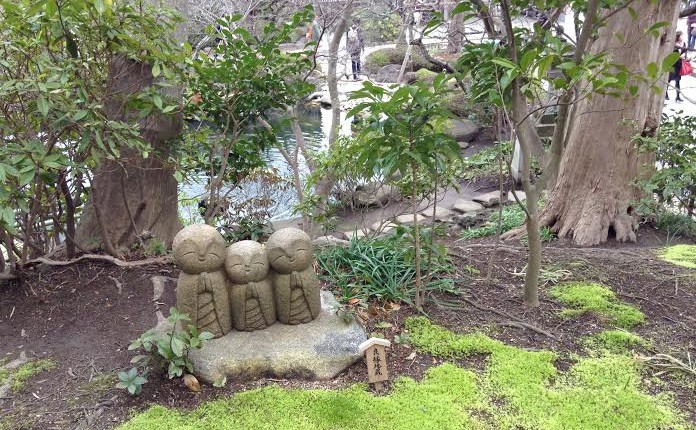Paying a visit to two goddesses in Kamakura
Spring is coming, and all over Japan, flowers are just beginning to bloom. A little over a week ago, I went with a group of friends to Kamakura-shi, in Kanagawa Prefecture. Kamakura is known for being the seat of the Shogunate during the famed Kamakura Period and within its borders are a number of famous shrines, temples, and museums.
Hase-dera is one such temple, located near Hase Station on the Enoshima Electric Railway Line. It is a short walk from the station, which is small and wooden. By the entrance, there are several ponds, with fat koi fish drifting slowly through the waters. It was still too early for most of the trees to flower yet and their brown branches were thin and bare. To the left of the main path, however, there were sweet-smelling cup-shaped white blossoms that looked like they were growing against the pale sky. Its sign identified it as 白木蓮, or white magnolia.
The main attraction of the temple is a wooden statue of Kannon, traditionally the goddess of mercy. It had eleven heads, each supposedly representing a different stage of enlightenment, and though it was hard to tell in the low, flickering lighting of the chamber, it seemed to glitter in gilded gold. Scattered all around her were charms for sale, and I spent a long time flipping through a small booklet, containing a list of Chinese characters and their various denotations and connotations. You were supposed to choose one, and then write it with a brush on a smooth stone and leave it in the temple as a wish to the goddess. (I didn’t do it, by the way. I didn’t want to offend Kannon or embarrass myself with my less than admirable penmanship.)
On the extreme right of the grounds was the Benten-kutsu, or Benten Cave. It was carved into a mountain-side, its entrance marked by the red arches of the Shinto torii gate. Within, the tunnels were low and narrow, and you had to fold yourself nearly in half to go through certain sections. (“No, Jasmine,” a friend of mine quipped from behind me, “I think you can go through the entire thing standing.”) The walls of the cave were filled with statues and devotions to Benzaiten, the only female goddess among the Seven Lucky Gods featured in Japanese mythology. She represents beauty, art, knowledge, and especially music and is often depicted with a biwa, or a traditional Japanese lute.
One of the interesting points about Japanese religion is that it is adaptable (as adaptable, say, as the English language). Buddhism and Shinto started off as two separate religions, but now you see Shinto gates on Buddhist temple grounds, and no one thinks twice about it. I love to visit temples and shrines because they are often in close vicinity to one another, and in the same few blocks, there can be any number of Buddhist and Shinto gods and goddesses housed in harmony with one another. Within these religions there are a number of stories and traditions from the rich history and mythology of Japan, and every visit is well worth the time.


